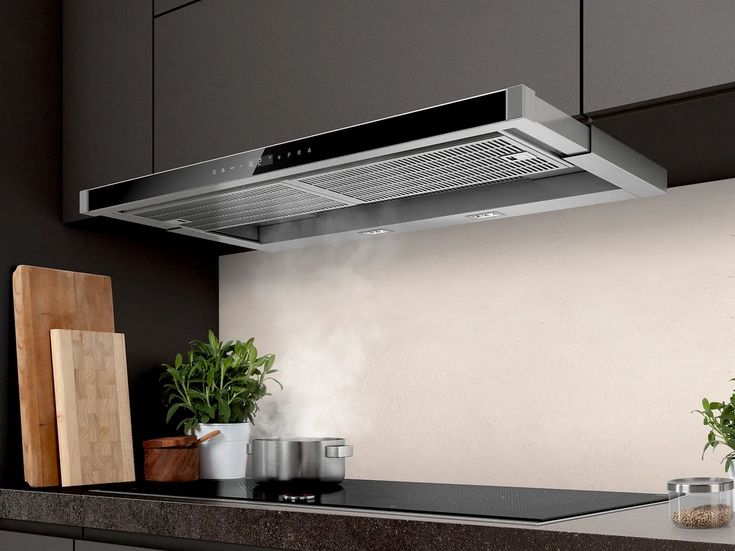Introduction: When planning kitchen ventilation, many homeowners are torn between installing a chimney or an exhaust fan. Both options serve to control smoke, odours, and grease, but they operate differently and have their own advantages. In this blog, we’ll break down the differences, uses, and benefits of both chimneys and exhaust fans, helping you make an informed choice for your kitchen.
Understanding How Chimneys and Exhaust Fans Work:
The core difference between chimneys and exhaust fans lies in their mechanisms. Let’s explore this further:
- Exhaust Fans: Positioned at a higher spot in the kitchen, exhaust fans are designed to expel airborne particles like steam and light smoke. They efficiently eliminate water vapors and certain cooking particles but often miss the heavier grease particles, which settle around the kitchen over time.
- Chimneys: Installed close to the stove, chimneys excel at capturing all smoke, oil vapors, and odors directly from the cooking area. They have a built-in suction mechanism, quickly pulling and venting out pollutants from the immediate surroundings. This helps in keeping your kitchen cleaner and grease-free.
Factors to Consider When Choosing Between Chimney and Exhaust Fan
Let’s discuss some important factors to help you make the right choice:
1. Price Range:
- Exhaust Fans: Affordable, typically ranging around ₹2,000. Suitable for smaller budgets or kitchens with minimal grease and smoke concerns.
- Chimneys: Higher upfront cost, often around ₹25,000 or more. The investment is worthwhile for kitchens with heavy-duty cooking, as they provide thorough ventilation and grease control.
2. Noise Levels:
- Exhaust Fans: Known for their quieter operation, some models, especially plastic ones, make minimal noise.
- Chimneys: Generally louder due to powerful suction. The noise level is a factor to keep in mind if noise sensitivity is a concern.
3. Ease of Installation:
- Exhaust Fans: Simple to install, and you can often handle installation yourself with basic tools.
- Chimneys: Require professional installation to ensure the ductwork and ventilation are correctly set up. It’s best to hire a professional for effective performance.
When to Opt for a Chimney Over an Exhaust Fan
Consider these two essential points when deciding if a chimney is the best choice for your kitchen:
- Kitchen Size: For small kitchens (less than 15 sq. ft.), an exhaust fan can suffice. However, in larger kitchens, a chimney with strong suction power (ideally 500 m³/hr or more) is advisable.
- Kitchen Layout: If your kitchen is closed off or lacks natural ventilation, a chimney is better for thorough smoke and odor control. For open kitchens, a combination of both an exhaust fan and chimney could work well, with the exhaust fan handling residual smells.
Maximizing Ventilation with Both Chimney and Exhaust Fan
If possible, installing both a chimney and an exhaust fan in opposite areas can maximize ventilation:
- Chimney: Effectively captures grease and smoke particles right from the stove.
- Exhaust Fan: Handles residual odors from dishes or trash, ensuring your kitchen stays fresh.
Conclusion
Choosing between a chimney and an exhaust fan comes down to your kitchen size, layout, and cooking needs. For heavy-duty cooking with lots of frying or oily foods, a chimney is essential. In smaller kitchens or those with light cooking, an exhaust fan may be enough. For best results, a combination of both can be ideal.

